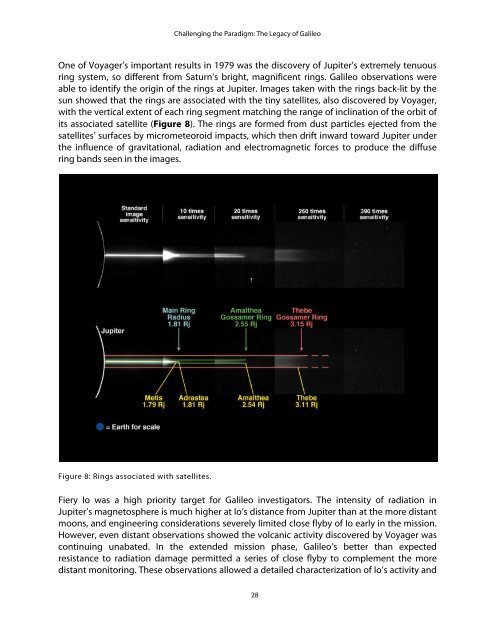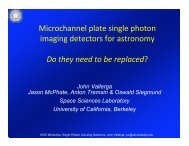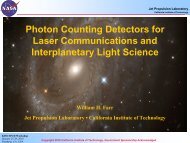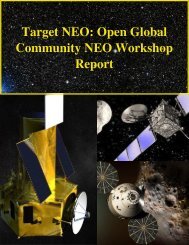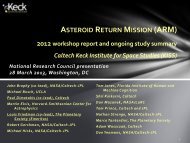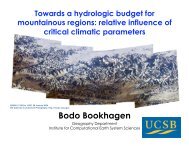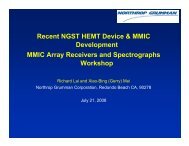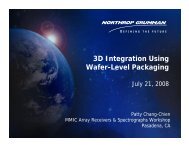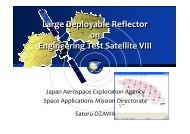The Legacy of Galileo - Keck Institute for Space Studies - Caltech
The Legacy of Galileo - Keck Institute for Space Studies - Caltech
The Legacy of Galileo - Keck Institute for Space Studies - Caltech
Create successful ePaper yourself
Turn your PDF publications into a flip-book with our unique Google optimized e-Paper software.
Challenging the Paradigm: <strong>The</strong> <strong>Legacy</strong> <strong>of</strong> <strong>Galileo</strong><br />
One <strong>of</strong> Voyager’s important results in 1979 was the discovery <strong>of</strong> Jupiter’s extremely tenuous<br />
ring system, so different from Saturn’s bright, magnificent rings. <strong>Galileo</strong> observations were<br />
able to identify the origin <strong>of</strong> the rings at Jupiter. Images taken with the rings back-lit by the<br />
sun showed that the rings are associated with the tiny satellites, also discovered by Voyager,<br />
with the vertical extent <strong>of</strong> each ring segment matching the range <strong>of</strong> inclination <strong>of</strong> the orbit <strong>of</strong><br />
its associated satellite (Figure 8). <strong>The</strong> rings are <strong>for</strong>med from dust particles ejected from the<br />
satellites’ surfaces by micrometeoroid impacts, which then drift inward toward Jupiter under<br />
the influence <strong>of</strong> gravitational, radiation and electromagnetic <strong>for</strong>ces to produce the diffuse<br />
ring bands seen in the images.<br />
Figure 8: Rings associated with satellites.<br />
Fiery Io was a high priority target <strong>for</strong> <strong>Galileo</strong> investigators. <strong>The</strong> intensity <strong>of</strong> radiation in<br />
Jupiter’s magnetosphere is much higher at Io’s distance from Jupiter than at the more distant<br />
moons, and engineering considerations severely limited close flyby <strong>of</strong> Io early in the mission.<br />
However, even distant observations showed the volcanic activity discovered by Voyager was<br />
continuing unabated. In the extended mission phase, <strong>Galileo</strong>’s better than expected<br />
resistance to radiation damage permitted a series <strong>of</strong> close flyby to complement the more<br />
distant monitoring. <strong>The</strong>se observations allowed a detailed characterization <strong>of</strong> Io’s activity and<br />
28


